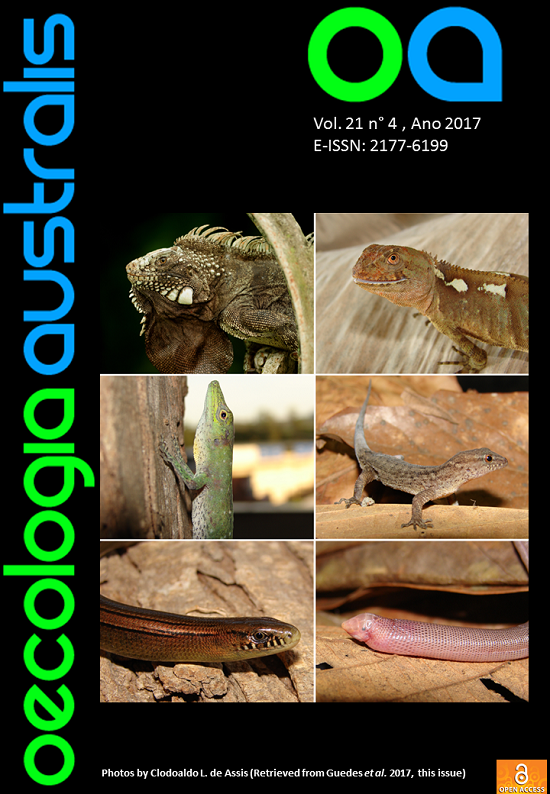ECTOPARASITIC BAT FLIES (DIPTERA, STREBLIDAE) OF BATS (CHIROPTERA, MAMMALIA) FROM MATA DO JUNCO WILDLIFE REFUGE, SERGIPE, NORTHEASTERN BRAZIL
DOI:
https://doi.org/10.4257/oeco.2017.2104.03Keywords:
Atlantic Forest, bat infracommunity, flies, PhyllostomidaeAbstract
Bats are hosts of many groups of parasites, including bat flies (Diptera, Streblidae). Although parasitism is common in bats, especially in members of the family Phyllostomidae, few studies have discussed host-parasite associations. In this paper, we present data on the community of bat flies parasitizing bats in a remnant of Atlantic Forest in Sergipe, northeastern Brazil. The bats were captured with mist nets over an eight-month period (between July 2009 and February 2010) in the Mata do Junco Wildlife Refuge in Sergipe, Brazil. For all ectoparasites captured, we calculated parasitism rates - prevalence, mean abundance and mean intensity of infestation by the parasite. We collected 269 bat flies, representing 18 species, parasitizing 113 specimens of bats belonging to the families Emballonuridae (2 spp.) and Phyllostomidae (16 spp.). The bat fly species Trichobius joblingi (45.9%), Speiseria ambigua (10%), and Trichobius costalimai (8.8%) were the most common, accounting for 65% of the total specimens. The mean intensity of parasitism ranged 1-7 in all bat species, with the highest prevalence being recorded for T. costalimai on Phyllostomus discolor (P = 66.6%). About 72% of the associations were considered to be primary. Our results in relation to abundance, mean intensity and prevalence of bat flies are in agreement with the reported in the scientific literature for the Atlantic Forest and Cerrado. On the other hand, we reported a large number of infracommunities (N = 18) in eight species of bats. Seven species of bat flies are recorded for the first time to Sergipe, where 23 species of bat flies are known.Downloads
Download data is not yet available.
Downloads
Additional Files
Published
2017-12-20
Issue
Section
Articles


